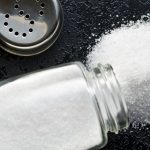
Making Sure Foods Don’t Contain Hidden Carbs
How to Avoid Hidden Carbohydrates
Carbs can lurk in the most unexpected places. Learn which foods contain hidden carbs so you can stay on track of your low carb, keto or paleo diet!
Disclaimer: The information in this article is not intended to replace personalized medical advice. A low carb diet may not be suitable for you. Consult your health care provider before making any changes to your lifestyle or use this information at your own risk.
Many people underestimate the amount of carbs in foods that aren’t traditionally thought of as “high carb”. In this article, we share a list of some of the most common foods that contain hidden carbs. We aren’t talking about bread, pasta or cereals – our list contains foods that some might even consider to be low in carbs by nature. However, most of the hidden carbs come from processing and refining. If you base your low carb diet around whole foods, you should be (mostly) in the clear. Always be sure to double check the ingredients before buying packaged products and be mindful of portion sizes. Learn about these and other tips for avoiding hidden carbs below!
- Meat and Seafood
Although grass-fed and free-range meat is generally safe for low carb diets, other meat options that are more widely available can be laden with carbs. These include:
- Processed meats. Avoid things like bacon, breakfast sausages and sandwich meat unless you know that they come from a reputable source and do not contain any additives. Many brands of these products contain gluten, sugar and other preservatives to enhance flavour, texture and shelf life.
- Shellfish and mollusks. The carbs in different types of seafood can vary. For example, shrimp is low in carbs and can be enjoyed on a low carb diet (be sure to purchase wild caught shrimp or prawns and avoid any frozen varieties with added preservatives). Other types of shellfish and seafood are less low carb-friendly. Here are some of the carb counts for 100-gram servings of seafood:
- Mussels: 7g
- Clams: 5g
- Octopus: 4g
- Oysters: 4g
- Squid (calamari): 3g
Other types of fatty fish, such as salmon, mackerel, sardines and tuna are great sources of healthy fats, specifically omega-3 fatty acids and contain virtually no carbs. Aim to include 2-3 servings of these each week, or find a fish oil supplement to obtain these essential nutrients.
- Condiments
Many people don’t think about the carb content of the condiments they use, since they are often not one of the main components of a meal. However, store-bought condiments can be loaded with starches and sugars to improve texture and taste. If buying store-bought condiments, always check the nutrition facts label and ingredients. Be mindful of sugar that falls under other names, such as fructose, sucrose, dextrose, fruit concentrates and syrups. Check out our selection of low carb condiments and sauces!
You can also use simple herbs and spices to flavour your food. These contain very few calories and carbs, if any, and they can be used in several different combinations to customize recipes. Plus, you won’t have to worry about any added sugars. Just be sure to buy spices and dried herbs that do not contain any preservatives, such as sulphites.
- Sugar Substitutes
While most low carb natural sweeteners are perfectly safe to eat and contain zero carbs, beware of certain artificial sweeteners. Some sugar substitutes are not low in carbohydrates at all, despite what you might think. Other sugar substitutes can be made from artificial ingredients, which may not be high in carbs, but have other health consequences.
Bulking agents such as dextrose and maltodextrin can be found in artificial sweeteners, such as Splenda. These substances are derived from corn, so they are very high glycemic and can raise blood sugar levels (in fact, they are even used to treat low blood sugar!), so they are best avoided on a low carb diet. Although it sounds surprising, it is also common to find dextrose and maltodextrin in foods marketed as “health products” such as nutrition bars, salad dressings, frozen meals, soups, energy drinks and meat substitutes. They are cheap and widely available resources, which is why they are used by big companies that want to market their products to the masses.
Some other substances to look out for in low carb products are sucralose and maltitol. These low calorie, low carb sugar substitutes may look good on paper (or on nutrition facts labels), but may have negative health effects. Sucralose is a zero calorie, zero carb sweetener, and is commonly found in low carb products such as bread, cereal, condiments and candies. However, its glycemic index can range from zero (only pure forms) to very high, which poses some risk for those watching their blood sugar levels. In addition, sucralose is an artificial sweetener. Why eat artificial foods when natural foods exist?
Maltitol is technically a sugar alcohol, which are often considered safe for low carb diets as they are not processed by the body the same as sugar. However, maltitol has a glycemic index higher than most other sugar alcohols and it contains calories. While the body does not absorb all of the calories in maltitol, it does provide about 2-3 calories per gram compared to 4 calories from sugar. Therefore, it can cause blood glucose levels to spike. In addition, with very high consumption, you can experience unpleasant digestive side effects after consuming maltitol such as bloating, gas, cramping and diarrhea.
Check out our inventory of natural sweeteners for some healthier sugar substitutes. Sweeteners such as erythritol, xylitol, monk fruit sweetener, and stevia provide the same sweetness as sugar, and some even have the same baking measurements as sugar, and are made from natural ingredients that are true zero calorie and contain zero carbs. Plus, they will not cause any unpleasant side effects or raise blood sugar levels.
- “Health” Juices
Low carb dieters may reach for green juices as a convenient way to get their veggies in. However, the problem with these “health” juices is that they get rid of one of the most important parts of the fruits and vegetables – the fibre! While you still get most of the vitamins and minerals, they won’t keep you full or keep your blood sugar levels down. Plus, any sugars and starches in those fruits and vegetables will likely remain in the juiced product. Since they are so easy to consume, you could be guzzling down large amounts of hidden carbs without knowing it! Always check the nutrition facts label and be aware of the carb content of the fruits and vegetables used to make the drink.
Instead, try making a homemade smoothie from whole fruits and vegetables, so you still get all the fibre from the flesh and skins. A good tip is to use frozen zucchini or cauliflower instead of ice. These vegetables are low in carbs and relatively bland, so they go well with any recipe. You can also add protein powder, nut butters, avocado, and berries. If you like a bit more sweetness, you could also add a flavoured liquid sweetener.
- Pickled Foods
Pickling liquid is usually a mixture of water, vinegar, salt – and sugar! Most store-bought pickled vegetables contain refined sugars, and these can make pickled foods a tricky food for low carb dieters. While they can add a lot of flavour and dimension to salads, sandwiches and other dishes, eating too many could throw off your carb count. If you want to be extra careful of hidden carbs, you could pickle your own low carb vegetables at home – it’s easier than it sounds! Plus, you can experiment with different flavours using spices and herbs. Check out our guide to pickling vegetables at home!
- Nuts
Nuts are a great staple food to include on low carb diets. They provide healthy fats as well as several essential vitamins and minerals. While many nuts such as pecans, macadamia nuts and brazil nuts are low in carbs (4-5g net carbs per 100g serving), some other nuts may surprise you with their carb content! Here is a breakdown of the net carbs found in 100g servings of other nuts:
- Walnuts: 7g
- Hazelnuts: 7g
- Peanuts: 8g
- Pine nuts: 9g
- Almonds: 9g
- Pistachios: 15g
- Cashews: 22g
When eating nuts, portion control is essential. Nuts are very easy to over consume since they are small and especially delicious when roasted and salted! Try to measure out nuts into a bowl or container, rather than eating them out of the bag. You can also enjoy them as nut butters, but just be sure to check that they do not contain added sugars and aim to follow the serving sizes suggested on the jar. Seeds such as flax seeds, hemp seeds, chia seeds and pumpkin seeds also provide many of the same nutrients as well as healthy fats while being lower in carbs than most nuts.
- Root Vegetables
Root vegetables contain starches, which do count against net carbs. Although they may not register in our minds as “high carb” foods since they are not grains, low carb dieters should avoid or limit root vegetables. The highest carb root vegetables include potatoes, yams, carrots, parsnips, beets and squashes. That said, some root vegetables are lower in carbs and great substitutes for high carb vegetables! Here are some examples:
- Radish: 2g net carbs per cup (raw)
- Celery root (Celeriac): 3g net carbs (cooked)
- Daikon: 3g net carbs (cooked)
- Turnip: 6g net carbs per cup (boiled)
- Rutabaga: 12g net carbs per cup (cooked)
Check out these recipes below for some inspiration:
- Keto Roasted Radishes (i.e. Potatoes!)
- Mashed Cauliflower with Celery Root
- Beef and Scalloped Daikon Casserole
- Keto “Potato” Salad with Turnips
- Low Carb Rutabaga Gratin
- Dairy Products
Low fat dairy products almost always contain sugars and other additives, so these should be avoided without question. However, even full fat dairy products naturally contain sugars. For example, a cup of milk has about 12g of carbohydrates! Certain cheeses such as cottage cheese, parmesan cheese, feta cheese, Swiss cheese and American cheese are also higher on the net carb scale. Yogurt also contains about 3-4g of carbs per 100g serving, and even more so if it is made from a dairy alternative (read more about this below).
- Milk Alternatives
A lot of people are making the switch to non-dairy alternatives. They are not only cruelty-free and better for the environment, but they also offer a host of nutrients not found in dairy milk as well as healthy fats. Many non-dairy milks are also low in carbs, such as coconut milk and almond milk. However, it is always best to buy the unsweetened versions, as the original versions are typically sweetened with cane sugar. Many popular brands of plant-based milk have unsweetened options – or, if you’re super ambitious in the kitchen, you can make your own! Also note that flavoured varieties of plant-based milks (such as chocolate or vanilla) often contain sugars. If you want these flavours but can’t find a version that is unsweetened, you could add your own vanilla extract or raw cocoa powder to a plain unsweetened milk.
Stay Connected
We hope that this article opened your eyes to some rather unconventional high carb foods and reminds you to always double check the nutrition label before assuming the net carb count of any product on the grocery store shelves. We also strongly recommend trying some of our mentions like pickling your own vegetables! If you have other ideas or a list of your own, please feel free to share it with our communities on Facebook and Instagram.
We also love to hear your direct thoughts by leaving us a Google Review. And, please consider subscribing to our weekly newsletter if you want to stay up to date with the latest keto news and fine Canada’s best selection of low carb and sugar free foods on sale weekly!






